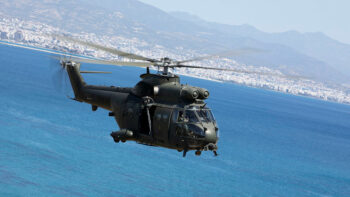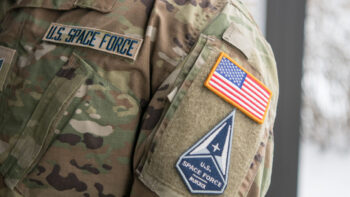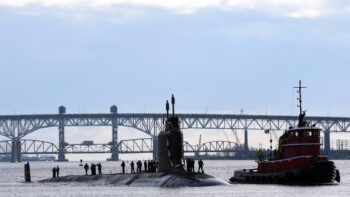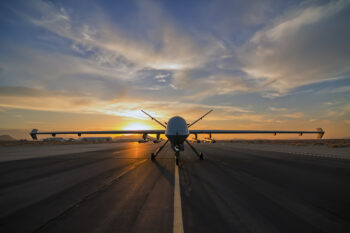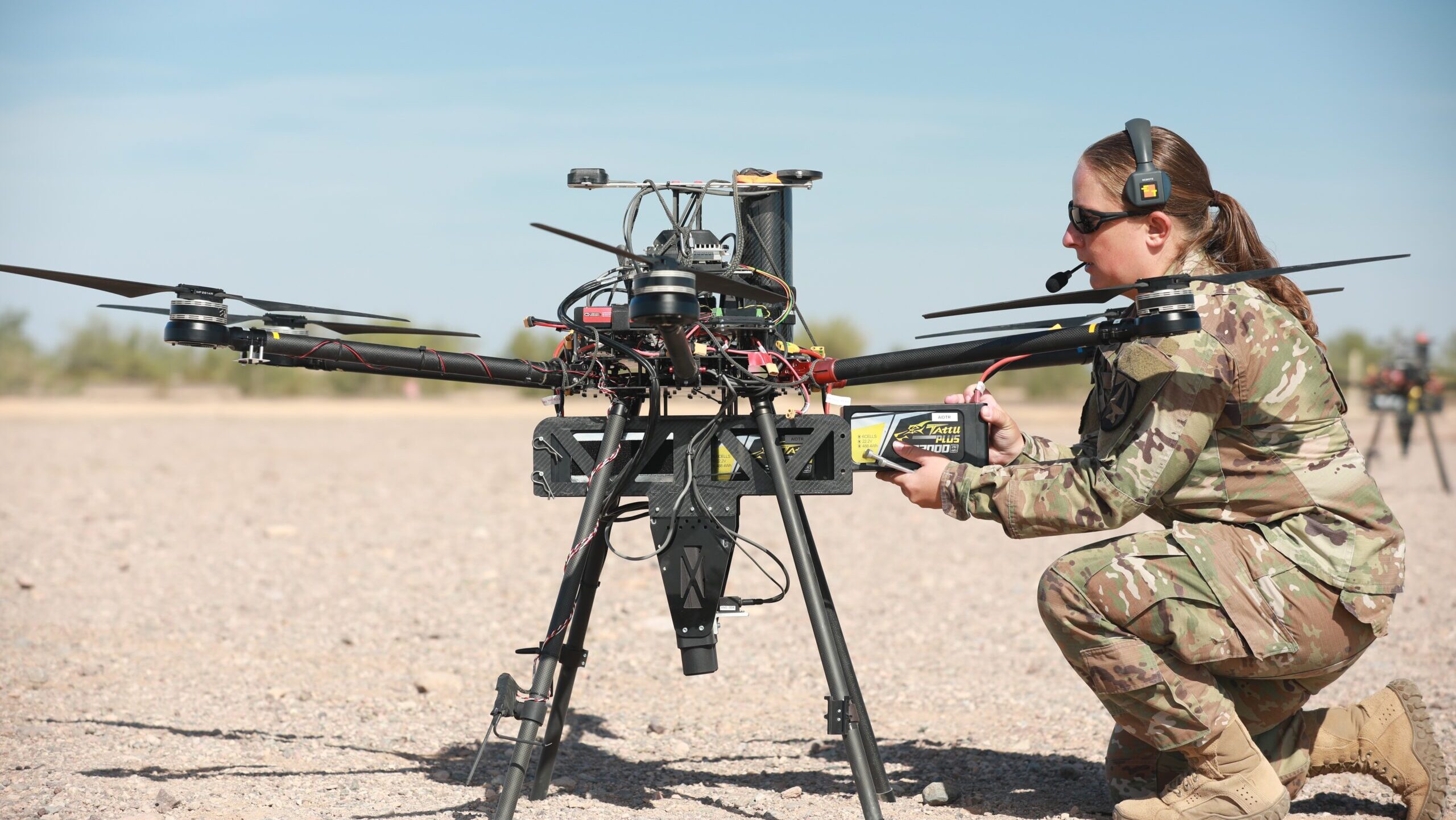
Army Staff Sgt. Elise Denning, assigned to Artificial Intelligence Integration Center, conducts maintenance on an unmanned aerial system in preparation for Project Convergence 2021 at Yuma Proving Ground, Arizona. (US Army/Spc Destiny Jones)
AUSA 2023 — The Army’s newest cross-functional team dedicated to contested logistics planning will be “fully” operational later this month, when it’ll begin in earnest to examine a host of technologies to sustain soldiers in remote locations, according to a four-star general in charge of the service’s future-focused outfit.
The contested logistics cross-functional team’s portfolio includes high-profile tech like autonomy applicable to larger manned and unmanned platforms, but also solutions for predictive logistics, autonomous resupply, alternative fuel sources and “all things batteries.”
“Contested logistics are hard enough without running a resupply operation and not getting the right thing: There’s a lot of room there for progress,” Army Future Command (AFC) Chief Gen. James Rainey told Breaking Defense in an interview ahead of this week’s Association of the United States Army conference in Washington, DC. “Autonomous and robotic resupply, leveraging all the new technology that’s out there… that you can do on land and at sea and in air.”
Earlier this year, the service announced it was standing up a contested logistics CFT in Huntsville, Ala., in a partnership between Army Future Command (AFC) and Army Materiel Command. It’s tasked, in part, with planning for how the service will sustain the future force, at the division level and below, in hard-to-reach or dangerous areas, like the Indo-Pacific region should conflict break out there.
That latest CFT joins the original list of eight — long-range precision fires, next-generation combat vehicles, future vertical lift, the network, air-and-missile defense, soldier lethality, synthetic training environment, and assured positioning, navigation and timing/space — designed to shepherd in a host of modernization programs spanning across six priority areas.
While the new team’s portfolio is likely to evolve as the service develops plans for the force of 2040 and beyond, for now Rainey said he doesn’t envision that it will be tasked with larger development projects like the Maneuver Support Vessel fleet designed to ferry troops and equipment around in the Indo-Pacific region. However, the work they do could contribute to those watercraft plans.
“That’s a bigger effort, but [the CFT] is involved in that,” the four-star general said. “They’re doing autonomous and robotic work that would support watercraft as part of contested logistics.”
More details about contested logistics plans could emerge this week during the Army’s annual conference, but regardless, it is expected to be a hot topic among industry looking for ways to help the service identify new requirements and fill those it already has.

















